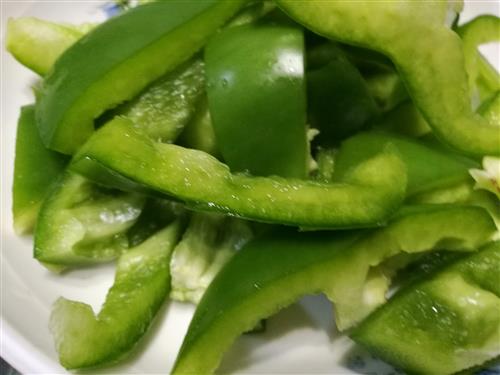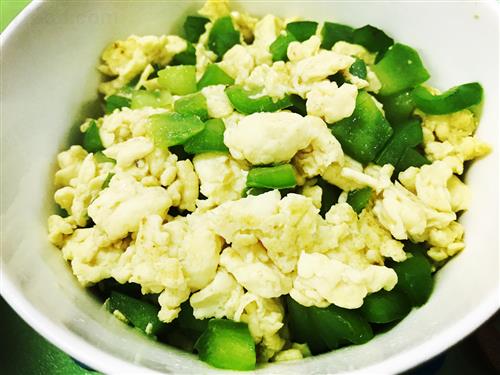The bell pepper is also known as bell pepper, bell pepper, bell pepper, and bell pepper. Although it contains capsaicin, it does not taste spicy, but it also has a hint of sweetness. It is estimated that this is so it will be called bell pepper again. After the oil has been fry, it will form a fragrance that stimulates people's appetite and stimulates the secretion of saliva and gastric juice, so the color pepper can be appetizing and help digestion.

The vitamin C content of the bell pepper is very high, even higher than that of the tomato. Because the spicy taste of the bell pepper is very light or not spicy at all, the bell pepper is eaten as a vegetable, not as a spicy seasoning, although the bell pepper Not very spicy, but it is also a kind of pepper.
The nutritional content of 100 grams of color pepper is as follows:

Carbohydrate: 5.4g
Protein: 1g
Dietary fiber: 1.4 grams
Fat: 0.2g
Vitamin A: 57 micrograms
Carotene: 340 μg
Vitamin E: 0.59 mg
Vitamin C: 130 mg
Vitamin B1: 0.03 mg
Vitamin B2: 0.03 mg
Vitamin B6: 0.12 mg
Folic acid: 3.6 μg
Niacin: 0.9 mg
Potassium: 142 mg
Sodium: 33 mg
Phosphorus: 20 mg
Calcium: 14 mg
Magnesium: 12 mg
Iron: 0.8 mg
Selenium: 0.38 micrograms
Zinc: 0.19 mg
Copper: 0.09 mg
Calories: 22 kcal
Color pepper is rich in nutritional value, vitamin C content is particularly high, also contains a variety of vitamins and trace elements, but the calories are very low, can be considered as a kind of slimming vegetables.

The effect of color pepper
1. lose weight
First, the low-calorie color of the pepper is a kind of weight loss when you eat vegetables that are not easy to gain weight. Second, the color pepper contains capsaicin, which can prevent the accumulation of body fat and promote the decomposition of fat, so the color pepper can help to lose weight.
2. Promote digestion
Capsaicin in colored pepper can stimulate the secretion of gastric juice, which helps digestion, and dietary fiber can promote gastrointestinal motility, but also to promote digestion.
3. Analgesic fever
Spicy hot pepper, hot, can make people sweat by reducing body temperature, relieve pain, so that color pepper can relieve pain.
4. Increase appetite
The color pepper has a unique taste. After cooking, the taste spreads more and stimulates the secretion of saliva and gastric juice, so the color pepper can enhance appetite.
Who should not eat too much color pepper
1. The capsicum of colored peppers is slightly irritating, so people with poor stomachs should eat less.
2. Eye disease patients should eat less color pepper.
3. Pepper heat, acne patients or people who get angry should eat less.
4. Try not to eat color pepper patients with tuberculosis.
Nutritional supplements, also known as nutritional supplements, nutritional agents, dietary supplements, etc., are used as an auxiliary means of diet to supplement amino acids, trace elements, vitamins and minerals needed by the human body. Nutritional supplements can be composed of amino acids, fatty acids, minerals and vitamins, or only consists of one or a variety of vitamins, can also be composed of one or more dietary ingredients, in addition to including amino acids, vitamins, minerals and other nutrients, also can have herbs or other plant components, or more ingredients of concentrate, extract or combination.Nutritional supplements, also known as dietary supplements, nutritional supplements, nutritional agents, dietary supplements, etc., are used as an auxiliary means of diet to supplement amino acids, trace elements, vitamins and minerals needed by the human body.we have Alpha GPC 50%,Tototrienol,7 8-Dihydroxyflavone,Palmitoylethanolamide Granular ,RU58841,1-1-Adamantylcarbonyl proline ACA,Galantamine Hydrobromide,Nooglutyl,Tianeptine Sodium,Oleoylethanolamide OEA,Sunifiram,Oleamide ODA,N-Dodecanoyl-L-Proline.
Alpha GPC 50%,Tototrienol,7 8-Dihydroxyflavone,Palmitoylethanolamide Granular,RU58841.
Xi'an Henrikang Biotech Co.,Ltd , https://www.henruikangbio.com